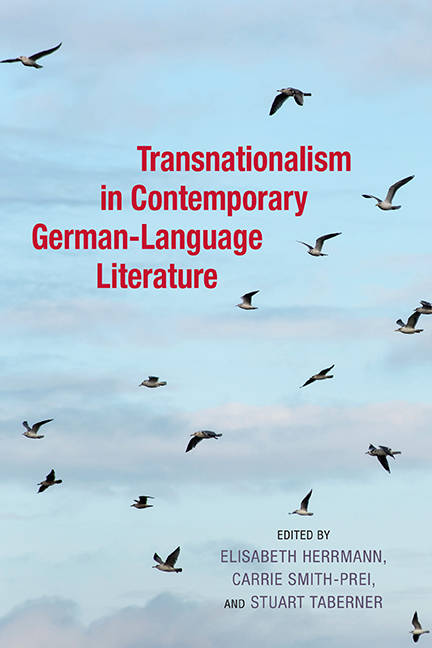2 - Transnationalism and Cosmopolitanism: Literary World-Building in the Twenty-First Century
Published online by Cambridge University Press: 10 June 2021
Summary
IT IS NO COINCIDENCE that the terms transnationalism and cosmopolitanism have become central to debates across the humanities and social sciences in recent years. Broadly speaking, transnationalism has typically been employed by social scientists exploring the intensification of migratory flows across borders that has characterized the era of globalization—and by literary and cultural-studies scholars interested in postcolonial and minority writing, hybridity, and deterritorialized identities— whereas cosmopolitanism has been favored by political scientists interested in the apparent weakening of the state system, and in global instability and insecurity, particularly after 9/11. More recently, however, researchers from across all these fields have begun more explicitly to link the two terms. Which challenges—and opportunities—does today's vastly intensified mobility of goods, people, and ideas across borders create in relation to the ideal of a unified humankind living in peace? In short, scholars have been searching for answers to the question of whether, as Victor Roudometof puts it, “transnationalism [may] lead to greater levels of cosmopolitanism?”
In this chapter, I offer an overview of the way much of today's German-language literary fiction likewise links transnationalism and cosmopolitanism—of course in a less explicit, less programmatic, more allusive manner. In essence, my focus is on what might come after transnationalism, that is, on the utopian potential that is at least implicit in the erasure of boundaries that both contain and separate people. (If we accept that this is what is taking place. Many would argue that transnationalism simply means the unregulated flow of capital rather than progress toward a Kantian Weltgemeinschaft, or world society.) To this extent, transnationalism moves to the background of this chapter. Many German-language authors, I argue, are currently reflecting not only on how transnationalism has rendered borders both more and less significant—nations are more permeable and yet still regulate who and what may circulate—but also on the equally pressing question of how we can inhabit proximate but also worldly spaces simultaneously. As Maria Mayr, Anke Biendarra, Claudia Breger, Katharina Gerstenberger, and Christina Kraenzle will explore in subsequent chapters, with more detailed reference to individual texts than is possible in an overview chapter such as this, these writers are asking: How can we live with “others,” both at home and globally?
- Type
- Chapter
- Information
- Publisher: Boydell & BrewerPrint publication year: 2015
- 2
- Cited by

